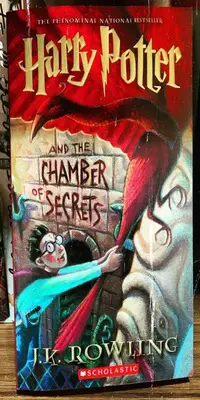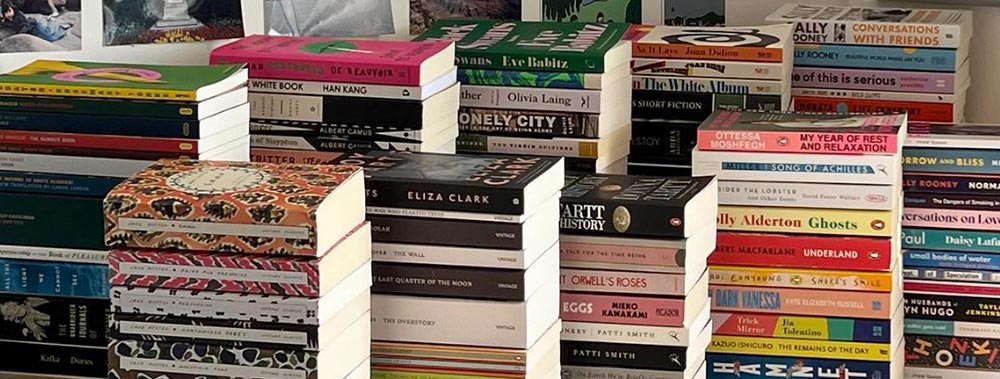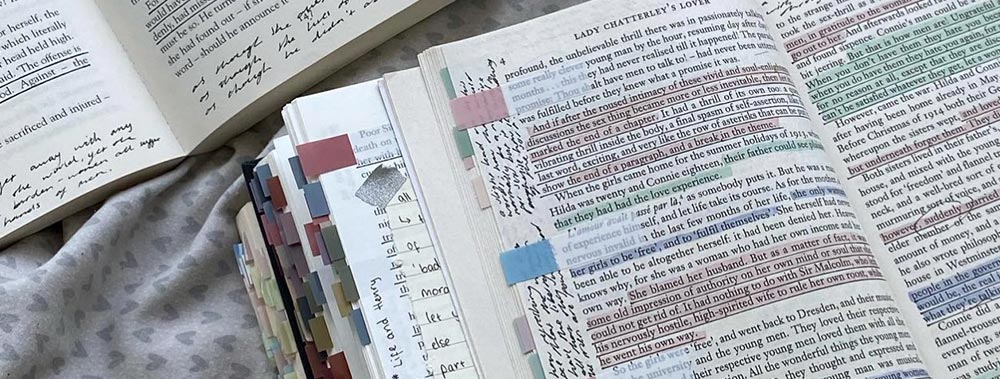Harry Potter and the Chamber of Secrets: Summary, Plot, Characters, Literary Analysis & More
“Harry Potter and the Chamber of Secrets” by J.K. Rowling, first published in 1998, is the second installment in the acclaimed series. This novel, like its predecessor, was a remarkable critical and popular success.
It follows the young wizard, Harry Potter, as he returns to Hogwarts School of Witchcraft and Wizardry for his second year. When the Chamber of Secrets is opened, a sinister force endangers the students.
The story explores themes of identity, bravery, and the power of friendship. With beloved characters, including Ginny Weasley and the enigmatic Tom Riddle, the book continues to enchant readers with its captivating world and gripping narrative.
This review will delve into the plot, characters, themes, and literary aspects of this magical adventure.

"Harry Potter and the Chamber of Secrets" continues the adventures of the young wizard Harry Potter during his second year at Hogwarts School of Witchcraft and Wizardry.
Table of Contents
Summary The Plot Characters Key Themes Genres Language used Literary devices Summing upThe Plot
The plot revolves around Harry Potter’s second year at Hogwarts School of Witchcraft and Wizardry. It starts when house elf Dobby tries to make sure that Harry doesn’t come back to Hogwarts.
Mysterious events occur, including the reopening of the Chamber of Secrets, believed to be the work of the Heir of Slytherin (Salazar Slytherin). Harry, along with his friends Ron and Hermione, investigates the Chamber’s secrets.
They uncover the malevolent influence of Tom Riddle’s diary and face a deadly basilisk. The novel’s climax involves a showdown with the basilisk, saving Ginny Weasley, and the revelation of Tom Riddle’s true identity. The plot is marked by suspense, danger, and the triumph of good over evil.
Characters
“Harry Potter and the Chamber of Secrets” introduces a diverse cast of characters, both familiar and new, to enrich the enchanting world of Hogwarts.
The main characters include Harry Potter, Ron Weasley, Hermione Granger, Ginny Weasley, Dobby the House-elf, Tom Riddle, Draco Malfoy, and Lucius Malfoy.
Harry Potter
The protagonist, a young wizard returning for his second year at Hogwarts, faces new challenges and mysteries, uncovering the Chamber of Secrets.
Ron Weasley
Harry’s loyal and humorous best friend, Ron, plays a vital role in the quest to solve the Chamber’s mysteries.
Hermione Granger
The intelligent and resourceful Hermione aids Harry and Ron in their adventures, offering her expertise and bravery. She is the one who always finds a way to protect Harry.
Ginny Weasley
Ron’s sister becomes a central character, facing peril and influencing the story’s outcome. She is the one who ends up alone in the chamber of secrets.
Dobby the house-elf
Malfoy’s house elf named Dobby is a big part of the story. Dobby’s loyalty to Harry and determination to protect him have a significant impact on the plot.
Tom Riddle (Tom Marvolo Riddle later known as Lord Voldemort)
A dark presence from the past, Tom Riddle’s diary harbors secrets and poses a grave threat to Hogwarts.
Draco Malfoy
A rival and adversary, Draco’s actions contribute to the tension and challenges Harry faces.
Lucius Malfoy
Draco’s father, a wealthy and influential figure, plays a sinister role in the unfolding events, further complicating the plot.
Key Themes
The book explores several themes, including the power of friendship. Harry, Ron, and Hermione’s unwavering loyalty to each other is evident throughout the book, helping them overcome challenges and solve mysteries.
Friendship
The theme of friendship is central as Harry, Ron, and Hermione face danger together, exemplifying their unbreakable bond and support for each other. Their combined strengths and determination ultimately save the day.
Identity and Courage
The characters grapple with their identities and muster the courage to confront their fears. Harry’s identity as a Parselmouth, Ginny’s possession by Tom Riddle, and Dobby’s quest for freedom all reflect this theme.
Prejudice and Pure-Blood Supremacy
The novel delves into the prejudice against Muggle-borns and the notion of pure-blood supremacy, embodied by characters like Lucius Malfoy. This prejudice adds depth to the story’s conflicts and moral dilemmas.
Coming of Age
As the characters mature, they face increasingly complex challenges. This theme is evident in Harry, Ron, and Hermione’s growing independence and their ability to make important decisions and take responsibility for their actions as they navigate the dangers of the Chamber of Secrets.
Genres in Harry Potter and the Chamber of Secrets
“Harry Potter and the Chamber of Secrets” incorporates various genres to create a rich and engaging narrative. It primarily falls under the genres of fantasy and young adult fiction.
The fantasy elements, such as magic, mythical creatures, and a magical school, transport readers to a captivating world. The young adult fiction genre enables readers to relate to the characters’ coming-of-age experiences and moral dilemmas.
Fantasy
The story’s magical elements, including spells, mythical creatures, and a wizarding school, immerse readers in a fantastical world where the extraordinary is commonplace. This genre contributes to the sense of wonder and adventure.
Mystery
The novel is infused with mystery as the characters try to unravel the secrets of the Chamber of Secrets and the Heir of Slytherin. The unfolding enigmas and clues keep readers engaged and eager to uncover the truth.
Adventure
The plot is driven by the characters’ quest to solve the mysteries and confront the dangers lurking within Hogwarts. This adventure genre infuses the narrative with excitement, suspense, and action.
Coming of Age
As the characters grow, they face complex challenges and moral dilemmas. This genre allows readers, particularly young adults, to relate to the characters’ journeys of self-discovery and personal growth as they navigate the challenges of the magical world.
Language used in Harry Potter and the Chamber of Secrets
J.K. Rowling’s writing style is characterized by its vivid and immersive language, which brings the magical world to life.
The author employs descriptive language to create a rich atmosphere, from the eerie depths of the Chamber to the enchanting Diagon Alley. Rowling skillfully uses dialogue to convey emotions, building a connection between readers and the characters.
Literary devices in Harry Potter and the Chamber of Secrets
In the book, various literary devices are skillfully woven into the narrative to enhance the storytelling. These devices include foreshadowing, symbolism, and allegory. Foreshadowing hints at future events, creating anticipation and suspense.
Symbolism, like Tom Riddle’s diary, represents deeper themes, and allegorical elements shed light on issues such as prejudice and discrimination within the wizarding world. These literary devices add layers of depth and meaning to the story.
Similes
In “Harry Potter and the Chamber of Secrets,” J.K. Rowling utilizes similes to vividly illustrate various situations and emotions, enhancing the reader’s engagement.
For example, when the threat to Harry’s life intensifies, the narrative describes it as “hanging over him like a sword of Damocles,” emphasizing the imminent danger. This simile engages the reader’s imagination, providing a tangible sense of the peril that surrounds Harry.
By comparing the threat to a well-known historical reference, Rowling deepens the reader’s understanding of the ominous situation, heightening suspense and empathy.
Metaphors
J.K. Rowling employs metaphors in “Harry Potter and the Chamber of Secrets” to convey deeper meanings and enrich the narrative. Nearly Headless Nick, the ghost, serves as a metaphor for the blurred boundary between life and death in the wizarding world.
His “nearly headless” state represents the uncertainty and ambiguity that exists in the afterlife, a theme that resonates throughout the series. The metaphor of Nearly Headless Nick adds complexity to the story, prompting readers to ponder the nature of existence in the wizarding realm.
Analogies
J.K. Rowling uses analogies to help readers grasp complex ideas. One such analogy can be found when Harry sticks a sword into the Sorting Hat to pull out Godric Gryffindor’s sword.
This action can be seen as an analogy for how individuals must reach within themselves to find their inner strength and courage when faced with adversity.
This analogy makes the idea of finding one’s inner strength relatable and tangible for readers, as they can connect it to Harry’s heroic journey and his realization of the power he possesses to protect himself and others.
Imagery
J.K. Rowling’s “Harry Potter and the Chamber of Secrets” is replete with vivid imagery that transports readers into the enchanting world of magic. The author masterfully creates sensory experiences throughout the narrative.
For instance, the foreboding and ghostly presence of Moaning Myrtle in the haunting bathroom scenes offers a vivid and eerie mental image. The descriptions of Harry spending time with Ron’s sister, Ginny, elicit warm and tender imagery, invoking feelings of affection.
The scenes on the Hogwarts Express, Aunt Petunia’s mundane household, and interactions with Muggle-born students are rich in imagery, painting a tapestry of contrasting worlds and experiences, engaging the reader’s senses and emotions.
Symbolism
There are several symbolic elements that connect to larger themes. The threat to kill Harry, stemming from the Chamber of Secrets, symbolizes the recurring presence of danger and the ongoing battle between good and evil.
The Chamber itself serves as a symbol of hidden secrets and the consequences of prejudice within the wizarding world.
These symbols tie into the broader themes of bravery, prejudice, and the ongoing struggle to protect the wizarding community from dark forces, adding depth and complexity to the story.
Personification
Rowling employs personification to enhance the depth of the characters and settings. When Harry realizes the truth about Tom Riddle’s diary, the diary is personified as a malevolent entity with its own intentions and agency.
This personification magnifies the eerie and ominous nature of the diary, making it a more compelling antagonist.
Additionally, when Harry stabs the diary with the tooth of the basilisk, it personifies the diary as a living entity, eliciting a sense of triumph and resolution.
This technique imbues inanimate objects with emotions and characteristics, making the story more engaging and the diary’s destruction more satisfying. Personification enriches the narrative by giving life to the magical elements of the story.
Hyperbole
In “Harry Potter and the Chamber of Secrets,” hyperbole is a powerful literary device used to emphasize the magnitude of events and emotions. An example can be seen in Harry’s plight, where he’s often described as “the only remaining family” to the Dursleys, which exaggerates the intensity of his mistreatment.
Additionally, the Quidditch match where Harry flies spectacularly captures attention and enhances the sense of exhilaration, highlighting Rowling’s use of hyperbolic language to intensify the narrative’s excitement and dramatic moments.
Irony
J.K. Rowling employs various types of irony throughout the book to add depth and complexity to the story. Verbal irony is present when Gilderoy Lockhart, known for his self-proclaimed expertise, unintentionally reveals his incompetence.
Situational irony arises when Harry, who is falsely accused of being the “heir of Slytherin,” ironically becomes the savior of Hogwarts by defeating the basilisk. These instances of irony add both humor and complexity to the narrative, underscoring the theme of unexpected twists and reversals.
Juxtaposition
J.K. Rowling skillfully employs juxtaposition to highlight stark contrasts and evoke thought-provoking scenarios. When Moaning Myrtle warns Harry of impending danger, her haunting presence contrasts with the ordinary world of Hogwarts, creating an eerie atmosphere.
Similarly, Harry’s time spent with Justin Finch-Fletchley, a Muggle-born student, emphasizes the stark contrast between those who value diversity and harmony at Hogwarts and the prejudice that threatens it.
Juxtaposition deepens the narrative by emphasizing the tensions and differences within the wizarding world, prompting readers to contemplate these contrasts.
Paradox
In the second book, paradoxical situations and statements abound, adding depth to the narrative. One such paradox is the seemingly innocuous act of damaging Ron’s wand, which inadvertently leads to dire consequences.
This paradox highlights the unforeseen impacts of seemingly minor actions. Additionally, the mysterious presence of Cornelius Fudge, the Minister of Magic, remains paradoxical as he is portrayed as both a figure of authority and as someone hesitant to acknowledge the gravity of the Chamber’s threat.
These paradoxes serve to underscore the intricate web of the wizarding world and the multifaceted characters, prompting readers to ponder the complexities of the story’s events.
Allusion
J.K. Rowling incorporates various allusions, enriching the narrative with intertextual references. For instance, the dinner party hosted at Professor Lockhart’s home alludes to extravagant social gatherings reminiscent of the Roaring Twenties, which serves to emphasize Lockhart’s flamboyant and boastful personality. The basilisk’s fangs, which play a significant role in the story, evoke the imagery of mythical serpents in ancient legends, adding a layer of mythological allusion. These allusions enrich the story by connecting it to a broader cultural and literary context.
Allegory
“Harry Potter and the Chamber of Secrets” contains allegorical elements that represent broader themes and concepts within the wizarding world. For instance, the Chamber of Secrets itself can be seen as an allegory for the hidden prejudices and dark history that lurk beneath the surface of Hogwarts.
The concept of a spell backfiring serves as an allegory for the unintended consequences of one’s actions, underscoring the theme of personal responsibility.
These allegorical elements add depth to the narrative by inviting readers to explore deeper meanings and draw parallels to real-world issues.
Onomatopoeia
J.K. Rowling employs onomatopoeic words to create auditory dimensions in her narrative. For example, during the action-packed scenes in the book, the author uses words like “whiz,” “bang,” and “clang” to immerse readers in the sounds of magical spells, duels, and the chaos within the wizarding world.
These onomatopoeic words enhance the reader’s engagement and provide a vivid and dynamic experience of the story’s action sequences.
Repetition
The author employs repetition strategically to emphasize key themes and emotional impact. The recurring motif of “the Chamber of Secrets” itself, echoed throughout the book, underlines the mystery and danger associated with this mythical place.
Repetition of phrases like “heir of Slytherin” and “Mudblood” serves to intensify the themes of prejudice and discrimination within the wizarding world, amplifying the emotional impact as characters confront these biases. Repetition creates a sense of urgency, and unease, and reinforces the core themes of the novel.
The Use of Dialogue
Dialogue is a fundamental narrative tool in “Harry Potter and the Chamber of Secrets.” It conveys character traits, exemplifies themes, and builds narrative tension.
Characters like Professor Dumbledore employ dialogue to impart wisdom and guidance, enhancing the novel’s themes of mentorship and personal growth. The banter between Harry, Ron, and Hermione showcases their loyalty and the theme of friendship.
In the Dueling Club scenes, dialogue heightens tension as characters confront danger, mirroring the broader themes of courage and adversity within the wizarding world.
Word Play
“Harry Potter and the Chamber of Secrets” includes some instances of wordplay, though not as prominently as other literary techniques. For example, when Nearly Headless Nick humorously describes his condition as “nearly headless,” it provides a clever play on words.
Additionally, Gilderoy Lockhart’s extravagant use of adjectives, such as “scintillating” and “mesmeric,” adds a touch of humor and wordplay to his character, emphasizing his vanity and exaggeration.
Rhetorical Devices
In “Harry Potter and the Chamber of Secrets,” J.K. Rowling skillfully employs rhetorical devices to create a persuasive effect within the narrative.
Rhetorical questions, often raised by characters and narrators, prompt readers to consider the mysteries and dangers surrounding the Chamber of Secrets, effectively engaging their curiosity and investment in the story.
Parallelism subtly underscores the cyclical nature of the Chamber’s threats and historical prejudices, persuading readers to reflect on the lasting impact of these issues.
These rhetorical devices are crucial in immersing readers in the narrative and encouraging them to contemplate its deeper themes.
Harry Potter and the Chamber of Secrets: FAQs
This section provides answers to common questions relating to this work.
What is the short summary of Harry Potter and the Chamber of Secrets?
“Harry Potter and the Chamber of Secrets” follows Harry’s second year at Hogwarts, where dark forces are unleashed from the Chamber of Secrets, endangering Muggle-born students. Harry and his friends uncover the truth and confront the evil within, battling prejudice and ancient legends.
What is the main point of Harry Potter and the Chamber of Secrets?
The main point of “Harry Potter and the Chamber of Secrets” is the exploration of prejudice and discrimination, as well as the importance of courage, friendship, and standing up against dark forces. It delves into the consequences of hatred and the power of unity.
Who is the heir of Slytherin who opened the Chamber of Secrets?
The heir of Slytherin who opened the Chamber of Secrets is revealed to be Tom Riddle, a manifestation of Lord Voldemort’s teenage self, who uses a diary to manipulate events and release a deadly basilisk.
Summing up: Harry Potter and the Chamber of Secrets: Summary, Plot & More
“Harry Potter and the Chamber of Secrets” by J.K. Rowling, the second installment in the beloved series, presents a captivating blend of fantasy, mystery, and coming-of-age themes.
The plot revolves around the re-opening of the Chamber of Secrets and the dangers it poses to Hogwarts students.
Harry, along with his loyal friends, embarks on a quest to unveil the truth behind this dark mystery. The story delves into themes of friendship, prejudice, and the courage to confront one’s fears. Rowling’s rich language and vivid imagery transport readers to the magical world, making it an engaging and emotionally resonant tale.
This book’s appeal lies in its ability to captivate both young and adult audiences, offering an enchanting escape into a world of wonder and adventure while exploring meaningful lessons about life, friendship, and the battle against darkness.
“Harry Potter and the Chamber of Secrets” is yet another testament to Rowling’s storytelling prowess, leaving an enduring impact on readers of all ages.
Other Notable Works by J.K.Rowling
If you are interested in Harry Potter novels, you may be interested in other works by J.K.Rowling including:
- “The Casual Vacancy” (2012): This novel explores the intricacies of human relationships and the secrets hidden within a seemingly ordinary small town after the unexpected death of a local council member.
- “The Cormoran Strike Series” (written under the pseudonym Robert Galbraith):
- “The Cuckoo’s Calling” (2013): The series begins with a private investigator, Cormoran Strike, solving the mystery of a supermodel’s apparent suicide.
- “The Silkworm” (2014): Strike investigates the murder of a controversial novelist.
- “Career of Evil” (2015): A serial killer with a personal vendetta against Strike sends gruesome body parts to his office, launching a relentless hunt.
- “Lethal White” (2018): Strike and his partner, Robin, are entangled in a political and personal mystery.
- “Troubled Blood” (2020): They investigate a decades-old cold case involving a missing doctor, leading to a tangled web of secrets.
- “The Ickabog” (2020): A charming children’s book that tells a fable-like story, featuring a legendary beast and themes of bravery, truth, and the power of community.
J.K. Rowling’s diverse writing ventures have something for readers of all ages and tastes.







